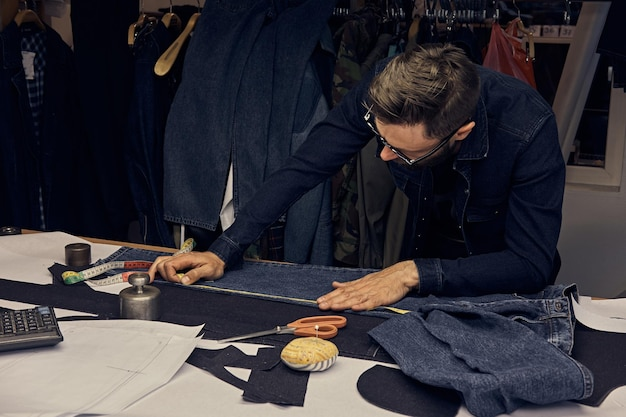
A fashion carbon footprint refers to the total greenhouse gas (GHG) emissions generated throughout a garment’s lifecycle. This includes emissions from raw material production, textile processing, assembly, transportation, consumer use, and eventual disposal.
In the fashion world, this footprint is substantial. According to the United Nations, the fashion industry carbon emissions account for nearly 10% of global emissions—more than the combined emissions from international flights and maritime shipping.Understanding the carbon footprint in apparel gives consumers and brands a crucial foundation for making more sustainable choices.

The fashion industry carbon emissions stem from complex, globalized supply chains. Key sources include:
Frequent washing and drying
Poor-quality garments discarded quickly
Landfills or incineration of unsold or unwanted clothes
Synthetic fibers release GHGs or microplastics over time
At the heart of these issues is the fast fashion carbon footprint, driven by high volumes, low prices, and a culture of disposability.

To understand the environmental advantage of custom clothing, we must compare it to fast fashion—the primary driver of excessive fast fashion carbon emissions.
| Factor | Traditional Clothing (Mass-Produced) | Custom Clothing (Made-to-Order) |
| Production Volume | Produced in bulk, often based on sales forecasts | Produced only when an order is placed |
| Inventory Waste | Overproduction leads to unsold stock, markdowns, or landfill | No excess inventory; virtually zero unsold products |
| Material Waste | Fabric cutting done at scale, with significant offcuts | Patterns optimized for individual pieces; lower waste |
| Sampling | Multiple physical samples needed per design | Often uses digital 3D design and virtual fitting |
| Transport Emissions | Multiple long-haul shipments (raw → mill → factory → warehouse → store) | Fewer transportation steps, often local or direct-to-consumer |
| Energy Use | High energy consumption for mass production | Smaller batches, lower power usage per unit |
| End-of-Life | Poor-quality garments discarded quickly | Better fit and quality = longer usage life |
The fast fashion carbon footprint is aggravated by overproduction and long supply chains. In contrast, custom clothing offers leaner, more efficient production with far lower emissions.
Custom clothing makes a measurable difference in lowering the fashion carbon footprint by tackling emissions at multiple stages of the apparel lifecycle. Unlike mass-produced garments, made-to-order clothing reduces waste, energy use, and logistics emissions in ways that fast fashion simply cannot.
Here’s how:
Traditional fashion relies on mass production based on sales forecasts, leading to significant overproduction—over 30% of garments are never sold and often end up in landfills, generating avoidable carbon emissions. In contrast, custom clothing uses on-demand production, creating each piece only after it's ordered. This approach eliminates excess inventory, reduces manufacturing waste, and lowers energy use, making a direct and measurable impact on reducing both textile waste and CO₂ emissions.
Fast fashion relies on complex, long-distance supply chains, with materials and production stages spread across multiple countries—resulting in high transportation-related emissions. Custom clothing shortens this chain by using local production and direct-to-consumer shipping, significantly reducing fuel use and lowering the overall carbon footprint of distribution.
Fast fashion’s high return rates—driven by poor fit and quality—create substantial emissions from extra packaging, shipping, and product waste. Custom clothing, tailored to individual measurements, significantly reduces returns, cutting down on reverse logistics and associated carbon emissions.
Traditional fashion relies on physical samples throughout the design process, generating waste and emissions from shipping and discarded materials. In contrast, brands offering custom suits online increasingly use digital tools like 3D simulation and virtual try-ons to streamline development, minimize fabric waste, and significantly reduce carbon emissions during the design phase.
Fast fashion’s poor quality and fit lead to garments being discarded after just a few wears, fueling a throwaway culture and increasing carbon emissions. Custom clothing, with its superior fit, materials, and perceived value, encourages longer use—reducing the need for frequent replacements and significantly lowering the environmental impact over time.
When combined, these five elements of the custom clothing model—on-demand production, localized manufacturing, fewer returns, digital sampling, and longer garment lifespan—offer a compelling, practical solution to counteract the fast fashion carbon emissions crisis.Custom clothing doesn't just represent a fashion trend—it’s a climate-conscious evolution in how clothing is made and consumed.

As global attention turns toward combating climate change, resource depletion, and social inequality, the fashion industry is under pressure to transform. One of the most effective, actionable steps forward is the shift from mass production to custom, on-demand fashion.
Custom clothing doesn’t just reduce the fashion carbon footprint—it also contributes directly to several of the United Nations Sustainable Development Goals (SDGs), which serve as a global blueprint for a more equitable and environmentally secure future.
Here’s how:
Custom clothing exemplifies this goal by:
Compared to the waste-heavy fast fashion model, this approach embodies a truly circular and efficient production mindset.
Fast fashion is a major driver of fashion industry carbon emissions, from energy-intensive manufacturing to long-haul shipping. Custom clothing helps mitigate this by:
In doing so, it actively contributes to slowing global warming and meeting national carbon reduction targets.
Custom fashion often involves small-batch production, local workshops, or independent artisans. This fosters:
Rather than relying on anonymous overseas factories, custom clothing celebrates and empowers the people who make it.
The rise of custom clothing is deeply tied to technological innovation in fashion:
These technologies reduce material usage and energy consumption during development, while also streamlining the production pipeline—making fashion smarter, cleaner, and faster.
Sustainable custom fashion thrives on collaboration. Many brands work with:
These partnerships create a global network of shared accountability and environmental responsibility.
At first glance, custom clothing might seem like a personal luxury—but its ripple effects are global. When implemented at scale, the custom model contributes not just to fashion innovation but to real, measurable progress on the world’s most critical environmental and social goals.
It’s a model that turns every purchase into a purposeful act—one that aligns personal style with planetary responsibility.

Eco-Conscious Consumers
Make sustainable, ethical wardrobe choices. Custom clothing allows them to buy less but better, reducing their personal fashion carbon footprint while supporting transparent, responsible brands.
Independent Designers
Avoid mass inventory and create purposefully. The custom model empowers them to focus on quality, creativity, and client connection—without the pressure of overproduction or waste.
Brands & Retailers
Cut carbon footprint, reduce returns, and build loyalty. By shifting to made-to-order, brands can meet sustainability expectations while enhancing customer satisfaction and reducing operational risk.
Local Manufacturers
Gain opportunities from nearshoring and growing demand for craftsmanship. As brands shift away from overseas mass production, custom apparel suppliers, including local workshops and skilled artisans, are being revalued and revitalized. This shift not only supports regional economies but also enables faster turnaround, lower emissions, and greater transparency in the supply chain.
Corporate Buyers
Align custom uniforms with ESG goals. Custom-fit, low-impact uniforms help companies meet sustainability targets, improve employee experience, and strengthen their ethical brand image.
In an era where environmental impact matters, low-carbon custom apparel creates value for all—enabling a fashion system that is not only more efficient, but also more human and future-ready.

Low-carbon custom apparel offers a practical path to reducing the fashion industry’s environmental impact. From cutting overproduction to minimizing returns and transport emissions, it redefines how clothing is made and consumed.
Brands like Kutetailor are leading this shift. By combining on-demand production with smart manufacturing and digital fitting, Kutetailor reduces waste while delivering high-quality garments quickly and efficiently. Their model proves that custom fashion can be both scalable and sustainable.
In a world demanding better from fashion, custom clothing is no longer a luxury—it’s a smarter, cleaner, and more responsible way forward.